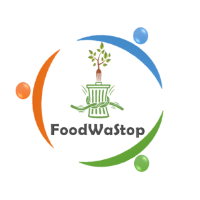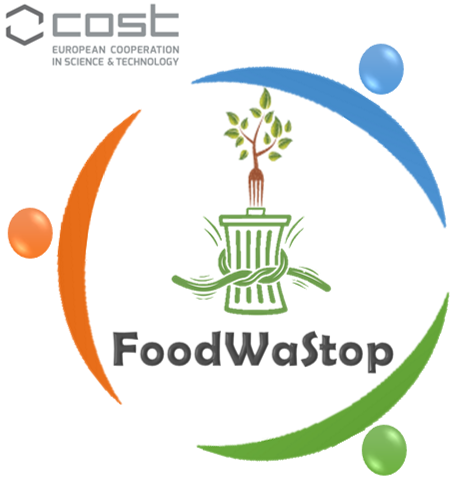
Sustainable Network for agrofood loss and waste prevention, management, quantification and valorisation
FoodWaStop COST Action CA22134
The FoodWaStop COST, is a scientific cooperation network, “CA22134 – Sustainable Network for agrofood loss and waste prevention (FLW), management, quantification and valorisation » funded by COST ACTION programme that addresses the following challenges and aims to: (i) build an interdisciplinary and multi-actor European Network that will also connect with non-EU Mediterranean countries, to promote knowledge on FLW beyond the state of the art; (ii) determine incidence of FLW in the critical points of the fruit and vegetable value chain; (iii) foster technological innovations and sustainable management strategies to reduce and prevent FLW; and (iv) valorise agrofood waste to promote a circular bio-economy.
The experience of the Coordinators and Participants gained from other related projects (e.g., PRIMA, H2020), the background from diverse EU and extra-EU countries, and the involvement of stakeholders and industry partners will contribute to increase awareness of this problem, to determine its incidence, to seek strategies for its management through exploitation of the potential of innovative technologies, and to define good practices to prevent FLW.
The FoodWaStop Network will provide benefits to various stakeholders and end-users, including all actors in the agrofood value chain, from farmers (Farm) to consumers (Fork). Moreover, FoodWaStop will create a knowledge platform that will promote innovation, deliver guidelines, and favour dialogue with policymakers, to focus their attention on the social and economic implications of FLW.
FoodWaStop CONFERENCE
The FoodWaStop conference is organized within the framework of COST ACTION “CA22134 – Sustainable Network for agrofood loss and waste prevention, management, quantification and valorisation” funded by COST (European Cooperation in Science and Technology) and European Union. This is the second edition of FoodWaStop conference. The first gathering was held in Ancona (Italy) in 2024, and brought together more than 150 international experts in FLW, in its different dimensions, from postharvest science, smart solutions, food and loss quantification methodologies, prevention and reduction strategies, up-cycling and valorisation technologies, food logistics, predictive modelling, etc.
The second edition was held in Córdoba (Spain) in 2025, which was a pivotal moment in the field for Food Waste and Loss. The conference was the arena of the latest advances in the area, inviting outstanding keynote speakers, developing dedicated workshops, and engaging interactions and synergies between different scientific areas, countries, cultures and scientific communities with relevance in Food Waste and Loss.
For further details, please visit the conference website: FoodWaStop Conference – MicroHibro
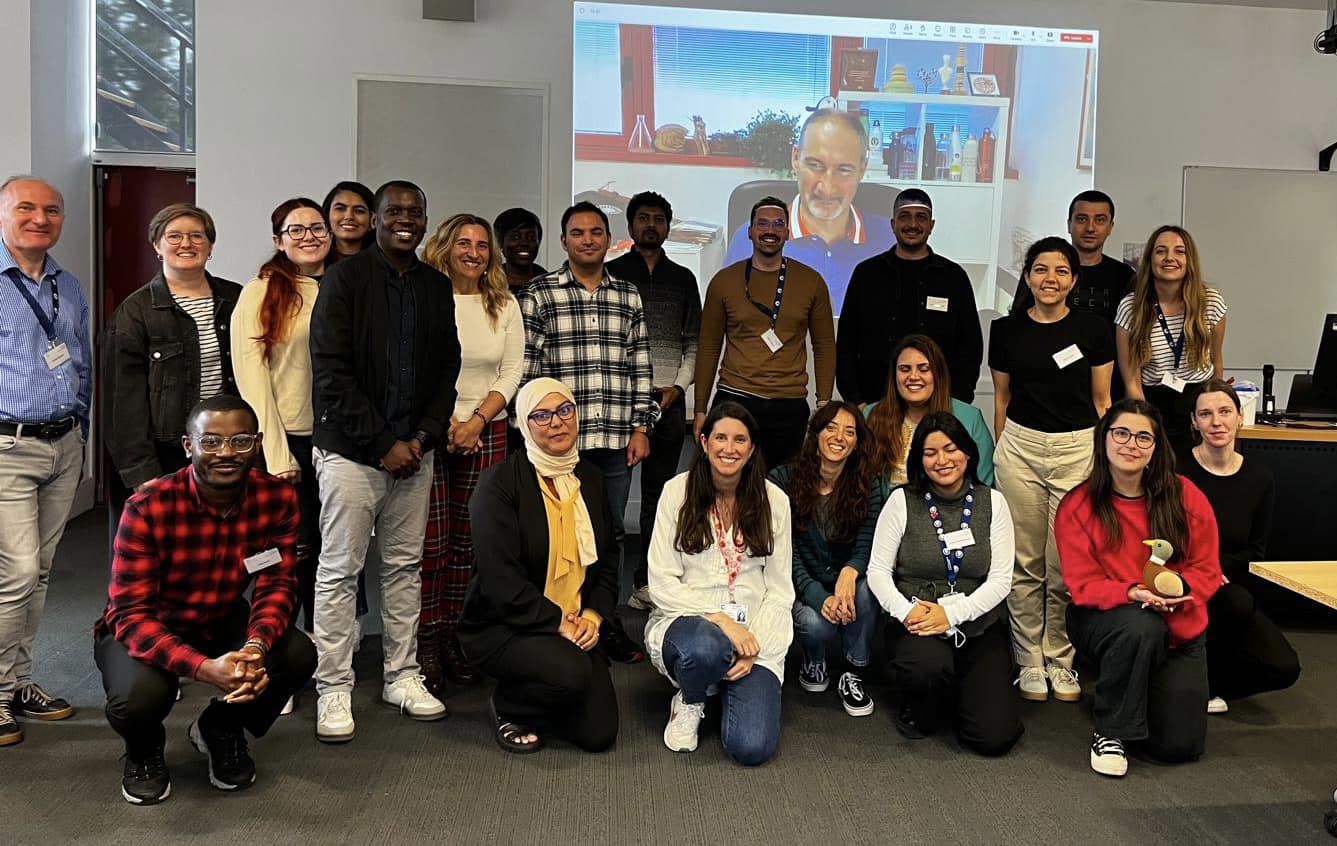
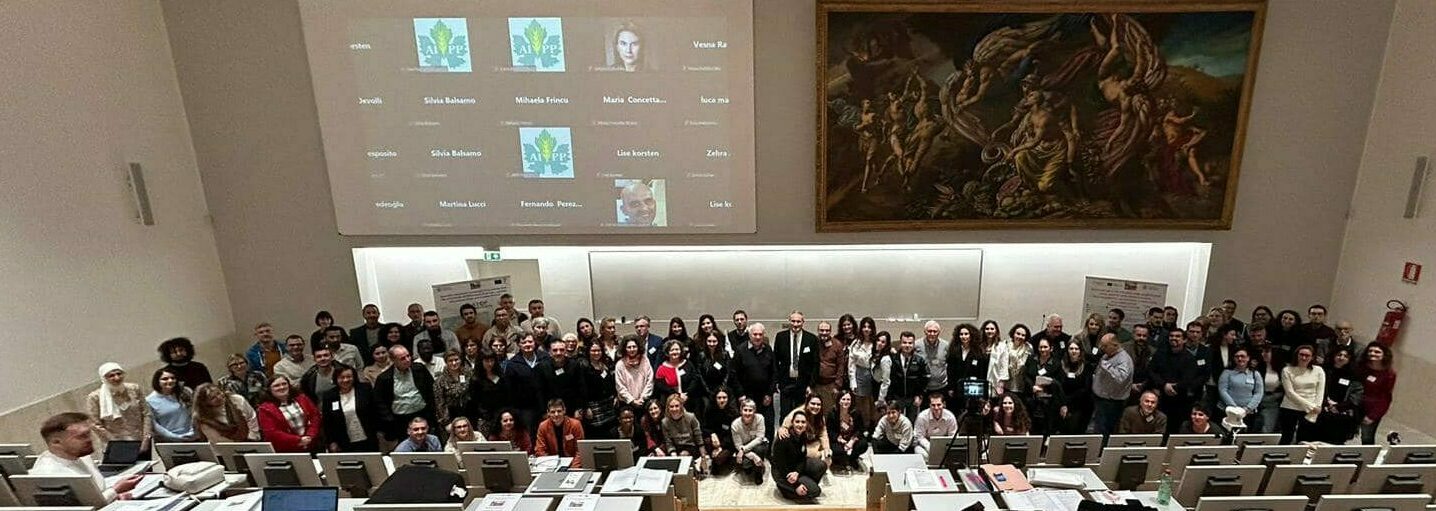

CONFERENCE TOPICS
The main objective of the FoodWaStop CONFERENCE is to bring together scientists and other relevant stakeholders, industry, associations and governments, to explore and discuss solutions for mitigating and reducing Food Waste and Loss along the food supply chain. The main topics of the conference include:
- Prevention of food loss and food waste
- Agrofood loss and waste management
- Quantification of food loss and food waste
- Valorisation of agrofood waste and a circular bio-economy
- Cross-cutting strategies and smart systems for food management
The conference was opened to other existing International and National scientific and technological initiatives, projects and research groups working on Food Waste and Loss reduction and prevention.
PROGRAMME
https://www.foodwastop.eu/wp-content/uploads/2025/03/II-FoodWaStop-Conference-Program.pdf
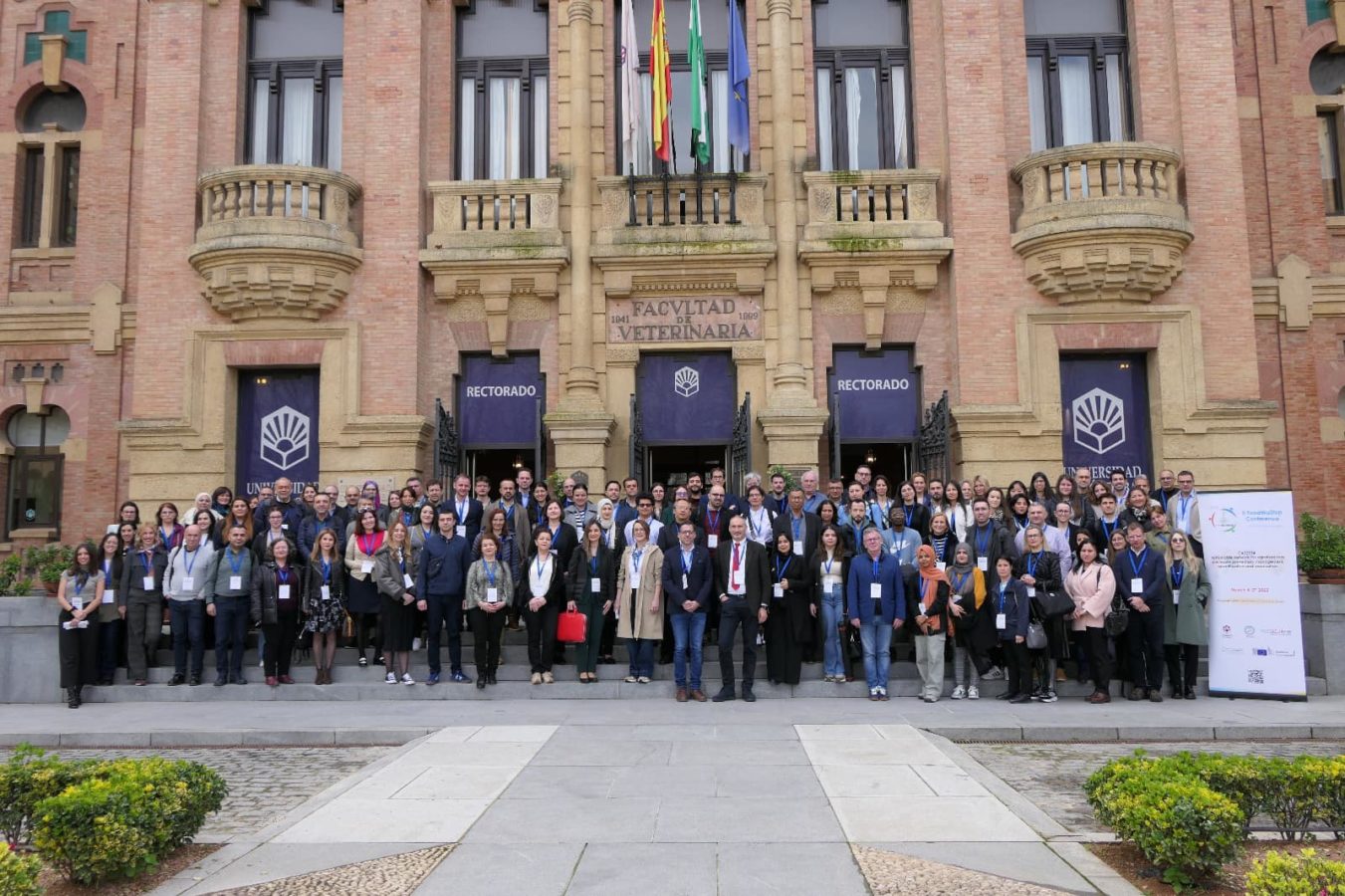
Group picture of over 100 participants from over 35 Countries
4 March 2025
Opening and welcome address
Prof. María José Polo Gómez. Vice-rector for Scientific Policy.
Prof. Manuel Hidalgo Prieto. Dean of the Faculty of Veterinary.
Prof. Fernando Pérez-Rodríguez. Local organizer and COST Action vice chair.
Prof. Gianfranco Romanazzi. COST Action chair.
COST Action “Sustainable Network for agrofood loss and waste prevention, management, quantification and valorisation, FoodWaStop”
Romanazzi, G., Moumni, M. Marche Polytechnic University, Italy.
Oral communications on WG 1. Prevention of food loss and food waste
Chairs: George Karaoglanidis & Alessandra Di Francesco
O1.1. Impact of Xylella fastidiosa on Mediterranean area: Searching for new management
strategies. Landa, B. CSIC-Instituto de Agricultura Sostenible (IAS), Spain.
O1.2. Is food packaging part of the solution or part of the problem? Kanaki, C., Thomaidis, N. National & Kapodistrian University of Athens, Greece.
O1.3. Measuring and Mitigating Food Loss and Waste: A Comprehensive Review on Quantification Methods and Preventative Strategies. Berisha, K.; Thaçi, L. Hungarian University of Agriculture and Life Sciences, Hungary.
O1.4. Leveraging Citizen Science to Unchain Food Waste from GDP and Population Growth
through Ecolabel Innovations in Food Packaging Industry. Kitanovski, V., Popovska, O., Demiri, S, Trifunov, Z., Lutovska, M., Kjosevski, S. University Mother Teresa Skopje, Macedonia.
O1.5. Chitosan-graft-Pomegranate Extract Hydrogel as An Antibacterial and Antioxidant Pad for Shelf Life Extension in Food Packaging. Ertas, Y.N., Erciyes University, Turkey.
O1.6. The molecular basis of superficial scald development in apple fruit using a multi omics and functional approaches. Skodra, C., Karagiannis, E., Michailidis, M., Samiotaki, M., Ganopoulos, I., Tanou, G., Bazakos, C., Dalakouras, A., Molassiotis, A. Aristotle University of Thessaloniki, Greece
Oral communications on WG 2. Agrofood loss and waste management
Chairs: Slaven Zjalic & Lluís Palou
O2.1. Utilization of By-products from the Cereal Milling Industry for Dietary Supplement
Production. Dziedzic, K., Poznań University of Life Science, Poland
O2.2. The characterization of wastewaters generated in Serbian medium-sized wineries. Miljić, U., Trivunović, Z., Puškaš, V., Dodić, S., Bajić, S., Grahovac, J., Dodić, J. University of Novi Sad, Serbia.
O2.3. Management of postharvest fruit rot by cold storage combined with biological
antifungal compounds. Ben Amara, M., Allagui, M.B. University of Carthage, Tunisia.
O2.4. Experience of the Tunisian partner in the PRIMA ‘STOP MED WASTE’ project. Allagui, M.B., Ben Amara, M. University of Carthage, Tunisia.
Oral communications on WG 3. Quantification of food loss and food waste
Chairs: Luca Falasconi & Pervin Kinay-Teksur
O3.1. Understanding Household Food Waste: A Global Survey on Perceptions, Quantification, and Key Drivers. Falasconi, L. University of Bologna, Italy.
O3.2. Food Waste in Czech Households: How to Change Consumer Behavior? Kubíčková, L. Mendel University in Brno, Czech Republic.
Oral communications on WG 4. Valorisation of agrofood waste and a circular bio-economy
Chairs: Jessica Girardi & Sarah Milliken
O4.1. Grape Pomace Valorisation: Development of a holistic biorefining approach. Kachrimanidou, V., Rincon, E., Espinosa, E., Kopsahelis, N. Ionian University, Greece.
O4.2. Properties of Oleogels from Upcycled Oils and Extra Virgin Olive. Oil Lin, Z., Cabral, E.M., Grasso S. University College Dublin, Ireland.
O4.3. From Waste to Wellness: Investigating Kiwiberry Leaves as a Nutraceutical Ingredient through In Vitro and In Vivo Studies. Silva, A.M., Almeida A., Dall’acqua, S., Sarmento B., Costa P.C., Delerue-Matos, C., Rodrigues F.* Polytechnic of Porto, Portugal.
O4.4. Valorization of the viticulture waste to obtain polyphenol-rich extracts that modulate gut cardiovascular dysbiosis. Dinu, L-D., Cojocaru, G., Vamanu, E., Antoce, A.O. University of Agricultural Sciences and Veterinary Medicine of Bucharest, Romania.
O4.5. Valorization of Hemp Seed Meal: Nutritional Characterization and Application in Breadmaking. Dapčević-Hadnađev, T., Hadnađev, M., Pojić M. Institute of Food Technology, Serbia.
O4.6. Valorization of grape pomace: Novel and sustainable anthocyanin extraction
techniques for the development of active packaging systems. Henares, M., Rincón, E., Espinosa, E. University of Córdoba, Spain.
O4.7. Exploring High-Value Applications of Solid-State Fermented Olive Leaves. Sar T., Pyrka I., Taherzadeh, M.J., Nenadis, N., Mantzouridou, F.T. University of Borås, Sweeden.
O4.8. Upcycled Pomegranate By-Products for Juice Bioactive Enrichment: A Green Extraction
Approach. Aydin, S., Tontul, İ., Türker, S. Necmettin Erbakan University, Turkey.
O4.9. Stone and berry fruits as alternative sources of pectin. Cybulska, J., Cruz-Rubio, J.M., Zdunek, A. Institute of Agrophysics Polish Academy of Sciences, Poland.
O4.10. Application of sustainable extraction and formulation principles in development of
tomato waste derived nutraceuticals (ExtracTom-App). Radić, K.*, Galić, E., Vinković, T., Golub, N., Petković, T., Vitali, Čepo, D. University of Zagreb, Croatia.
5 March 2025
Oral communications on WG 5. Cross-cutting strategies and smart systems for food management
Chairs: Marwa Moumni & Fernando Pérez-Rodríguez
O5.1. Reduction of fruit losses by sensing technology for early detection of postharvest
alterations and quality. Amodio, M.L., Russo, L., Fatchurrhaman, D., Colelli G.* Universitá di Foggia, Italy.
O5.2. Electronic nose for monitoring volatile organic compounds. Huynh, T.-P. Åbo Akademi University; Finland.
O5.3. Assessing the potential of digital twins in food supply chains to reduce food loss and
waste. Emel, Y. Tarsus University, Turkey.
O5.4. Applying systems thinking on reduction of food loss and waste. Wang, Y.*, Wang, K. University of Bedfordshire, UK.
Oral communication on WG 6. Networking and dissemination, communication and transfer of knowledge
Chairs: Gianfranco Romanazzi & Kata Ludman-Mihály
O6.1. Innovative Strategies for Agrofood Loss and Waste Reduction: Insights from PRIMA Agrofood Funded Projects (2018–2024). Wageih, M. PRIMA Secretariate.
O6.2. Foodwaste discourse-current stage and future perspectives. Bielenia-Grajewska, M. University of Gdansk, Poland.
General Discussion
Oral communications of WG activites
Posters
WG 1. Prevention of food loss and food waste
P1.1. Understanding Food Waste Management Practices and Consumer Perspectives in Albania
P1.2. Potentiometry with Ion-Selective Electrodes as a Cheap and Useful Analytical Technique for Food Quality Control
P1.3. Determination of trace amounts of titanium in nettle as a plant food material as food quality monitoring
P1.4. Functional properties and antifungal activity of wild radish (Raphanus raphanistrum L.)
P1.5. Impacts of Food losses on the Nutrition of the Population
P1.6. Evaluation of soil solarization on fungal soilborne pathogens’ populations, lettuce plant growth and the soil bacterial community
P1.7. Systematic Analysis of Food Waste Drivers in Canteens: Development of a Monitoring System for Leftovers
P1.8. New Scenarios for the Application of Controlled Atmosphere Storage
P1.9. Superomniphobic Coatings for Food Packaging Applications: Minimizing Waste Inside the Food Containers
P1.10. Action on post-harvest losses (PHL) reduction in Algeria
P1.11. Valorization of cold stored Tunisian pomegranate as ready-to-eat arils
P1.12. Addressing food waste in Serbia: challenges, strategies, and sustainable solutions
P1.13 Investigation of the antifungal activity of natural compopunds against Botrytis cinerea on fresh table grapes
WG 2. Agrofood loss and waste management
P2.1. The Use of Whey for Other products
P2.2. Disposal and Utilization of Soybeans of Different Varieties for Biofuel Production and Animal Feeding
P2.3. Influence of conduction drying on chemical properties of coffee beans and sustainable disposal of the residues
P2.4. Biochar derived from biological waste disposal enhances arbuscular mycorrhizal fungi (AMF) associations in grapevines
P2.5. Valorization of Sunflower Cultivated in Serbia: Enhancing Agrofood Waste Management and Promoting Circular Bioeconomy
P2.6. Yeasts Volatile Organic Compounds (VOCs) as Potential Growth Enhancers and Molds Biocontrol Agents of Mushrooms
P2.7. Global Biogas Industry Development: Identifying Key Influencing Factors
P2.8. Identification of a specific mechanism of herbicidal action against parasitic broomrapes on root extracts of lambsquarter (Chenopodium album)
P2.9. Encapsulation of a polyphenol rich byproduct of olive oil
P2.10. Influence of feed composition on the characteristics of sheep’s and goat’s milk
P2.11. Broccoli Byproduct Extracts Attenuate the Expression of UVB-Induced Proinflammatory Cytokines in HaCaT Keratinocytes
P2.12. Recovery of bioactive compounds from red grape pomace
P2.13. Polyphenol release from wild thyme dust extract in simulated gastrointestinal fluids
P2.14. Protein extraction from Daucus carota L. root peel: optimization of extraction solvent and procedure
P2.15. Harnessing Agri-Food Waste: Plant Leaf Extracts as Natural Agents Against Antibiotic Resistance
P2.16. Minimizing Heavy Metal Contamination in Seafood through Aquaponics: A Sustainable Solution for Food Security
WG 3. Quantification of food loss and food waste
P3.1. Fresh Produce Waste in Retail: Quantifying Losses and Identifying Drivers
P3.2. Food Waste Assessment in Hungary
P3.3. Toward Consistent Food Waste Reporting in the EU: Analyzing Flows Across Food Supply Chain Stages
P3. 4. Antioxidant Activity and Bioactive Compound Content of Bee Bread Waste from Bingöl, Türkiye
P3.5. The Food Production, Energy Supply and Environment ecosystems disruption due to the Russian war in Ukraine: challenges and future development scenarios
P3.6. Methodology for Food Loss Quantification (FOLOU Project)
WG 4. Valorisation of agrofood waste and a circular bio-economy
P4.1. Valorization of Phenolic Compounds Recovered from Olive Oil Byproducts and their Potential Use in Food Model Systems
P4.2. Insects on the plate: Assessing the sustainability of yellow mealworm proteins in food systems
P4.3. Investigation of the sugar profile of samples generated during in vitro digestion simulation of dietary carbohydrates using the HILIC-RID method
P4.4. Effects of apple cider vinegar extracts on carbohydrate digestion
P4.5. Recycling Waste Cooking Oil a Successful Way to Sustainability-Transformation of Waste Cooking Oil into Eco-friendly Product
P4.6. Effect of encapsulation wall material on aroma retention of citrus pomace
P4.7. Antioxidant Capacity of Orange and Lemon Peel Extracts and Their Use in Biosynthesis of Silver Nanoparticles
P4.8. Developing a Sustainable Milk-Sour Dessert with Pomegranate Seeds Flour: Quantifying and Valorizing Food Waste
P4.9. Food By-Products Valorisation: Nutritional Value and Consumer Acceptance of Wheat Cookies Enriched with Pumpkin Peel Powder
P4.10. Effect Of Fruit Waste Substrate on Antioxidant Profile in the Fermentation Process by S. johnsonii
P4.11. Biorefining Hemp Herb Processing By-Products Into Value Added Functional Food Ingredients by Consecutive Supercritical CO2 and Pressurized Liquid Extractions
P4.12. Biorefining of Under-investigated Botanicals for Nutraceutical and Functional Food Applications
P4.13. Sustainable Green Synthesis of Silver Nanoparticles from Fermented Origanum vulgare L. Extract and Their Antimicro-bial, Antioxidant Activity and Phytochemical Composition
P4.14. Argan by-products protein and fiber contents as potential food and feed Source
P4.15. Present state and future of management of biodegradable waste in Municipality of Ohrid (N. Macedonia) – Approaching to EU regulatives
P4.16. Eco-Friendly Extraction Method for Recovering Bioactive Compounds from Plant-Based Waste
P4.17. Sustainable Valorization of Raspberry Pomace Using Biocompatible Ionic Liquids
P4.18. Transforming Dragon Fruit Peel into High-Value Bio-Based Food Packaging Solutions: A Cascade Biorefinery Approach for a Circular Bioeconomy
P4.19. Valorization of Potato Peel Waste for Biodegradable Food Packaging Materials Using Deep Eutectic Solvents
P4.20. Development of a Coffee Pulp Infusion as A Strategy for Recovery After Moderate Physical Exercise in a Healthy Population
P4.21. Sustainable extraction of arabinose- and xylose- based oligosaccharides from beetroot by-products through innovative non thermal technologies
P4.22. Eco-sustainable Valorization of the Coffee Pulp through the Zero-Waste Strategy
P4.23. Sustainable Extraction of Truffle Bioactive Compounds Using PEF and ASE for Circular Bio-Economy Applications
P4.24. CoffeeMinds: Integrating Data Science in the Sustainable Valorization of Coffee By-Products as Neuromodulatory Ingredients
P4.25. Ultrasound-Assisted Extraction of Phenolic Compounds from Sunflower Seed Shells Using Natural Deep Eutectic Solvents
P4.26. Enhancing the Extraction of Phenolic Compounds from Spent Coffee Grounds Using Cold Atmospheric Plasma
P4.27. Maximizing Onion Peels Value: Strategies for a Circular Bioeconomy
P4.28. Magnetically Modified Biological Materials for Dye Removal
P4.29. Sustainable valorization of fruits by-products towards the development of nutraceuticals and functional foods
P4.30. Multipurpose valorisation possibilities of apple pomace: an application in functional bakery products.
P4.31. Effects of frass in growth and weed occurrence in oregano (Oreganum hireochealium L.)
P4.32. Food Waste as a Result of Food Product Marking: A Kosovo Perspective
P4.33. Argan Proteins in Press Cakes for Food Applications
P4.34. Creating Minimum Viable Products Using Biowaste Transformation Methods
P4.35. Consumer Willingness to Pay for Bio-Waste Products: The Case of Hazelnut Chips
P4.36. Brewers’ Spent Grains Upcycling in Foodstuffs
P4.37. Agro-Food Waste as a Source of Polysaccharides: Tailored Extraction and Structural Characterization
P4.38. Rice Straw as a Circular Economy Opportunity for a Better Future
P4.39. (Poly)phenols and Dietary Fiber in Coffee Husk: Macromolecular Interaction and Bioactivity
P4.40. Sustainable Active Packaging from Pomegranate: Development and Application of PCL Films for Apple Preservation
P4.41. Liquid Waste Streams from the Food Industry Treated Through Non Thermal Atmospheric Plasma as a Novel Product to Foster Seed Germination
P4.42. Transforming Food Processing Byproducts into Sustainable Bioplastics and their Properties
P4.43. Bioprospecting Microbial Diversity in Avocado Crop Compartments Using Amplicon and Shotgun Sequencing for Lignocellulosic Biomass Valorisation
P4.44. Advancing Food By-Product Valorization: Membrane Technologies for Sustainable Protein Recovery
P4.45. Microalgae Cultivation Using Enzymatically Hydrolyzed Stale Bread: A Sustainable Biorefinery Approach for Circular Bioeconomy
P4.46. From Valorization to Zero-Waste: Advancing Circular Bio-Economy in Agri-Food Systems
P4.47. Edible Films and Coatings: Enhancing Food Preservation and Waste Valorization through Bioactive Compounds Encapsulation
P4.48. A Policy Coherence Analysis of the Food Use and Waste Hierarchy
P4.49. Thermoformed Fiber-Polyethylene Biocomposites: Sustainable Packaging Solutions for Cherry Tomatoes
P4.50. Closed-cycle bioactive substance farm model – sea buckthorn farm case study
P4.51. Antioxidant Properties and Anti-Fungal Activity of Citrus Peel Extracts
P4.52. Presentation of the QuaReVAlentejo27 project
P4.53. Use of agricultural by-products from mustard varieties as a dietary source of trace elements and bioactive compounds
P4.54. From Byproduct to Benefit: Valorizing Oat Bran as a Fat Replacer in Cookie
P4.55. Investigation of reuse possiblities of unconsumed meals in hotel kitchens to prevent food waste
WG 5. Cross-cutting strategies and smart systems for food management
P5.1. Effect of Encapsulation Wall Material on Aroma Retention of Citrus Pomace
P5.2. Design of an Innovative Responsive Package Based on Biomass to Improve the Safety and Extend the Shelf Life of a Minimally Processed Fruit Salad
P5.3. The production of new biodegradable materials based on polyhydroxyalkanolates
WG 6. Networking and dissemination, communication and transfer of knowledge
P6.1. Reducing Food Loss and Waste in the French Agrofood Sector: Challenges and Innovations
P6.2. A Comprehensive Approach for Enhancing Knowledge and Skills Among Farmers to Limit Agrifood Loss and Waste
P6.3. Foodwaste Discourse-Current Stage and Future Perspectives
P6.4. Bringing knowledge and consensus to prevent and reduce food loss at the primary production stage
